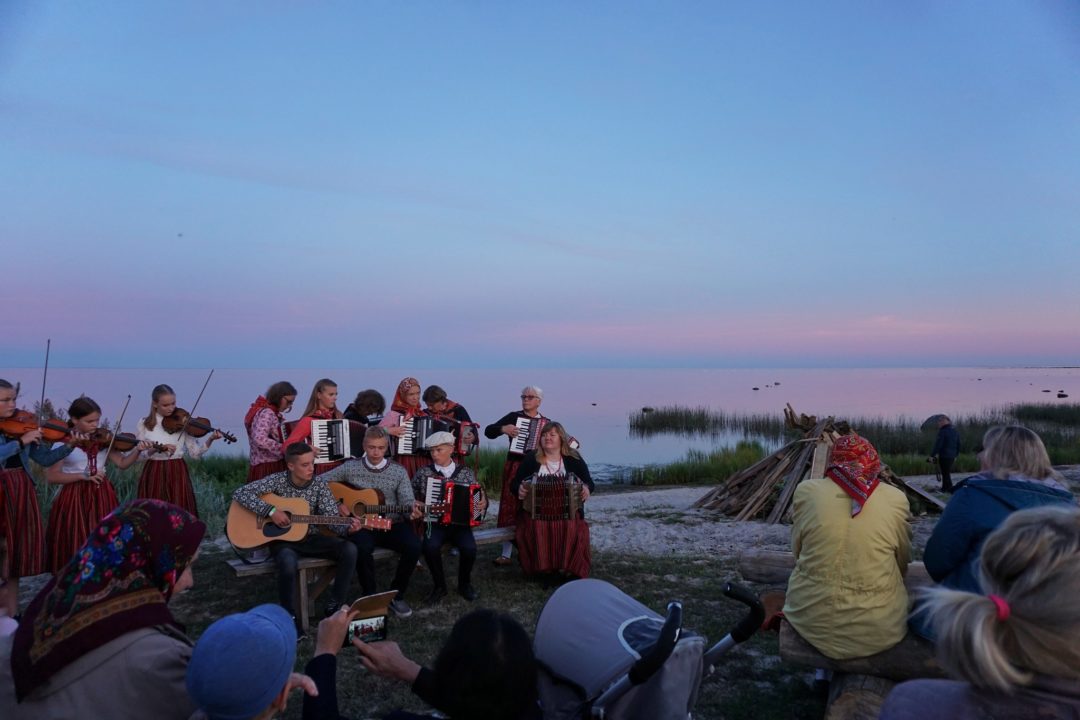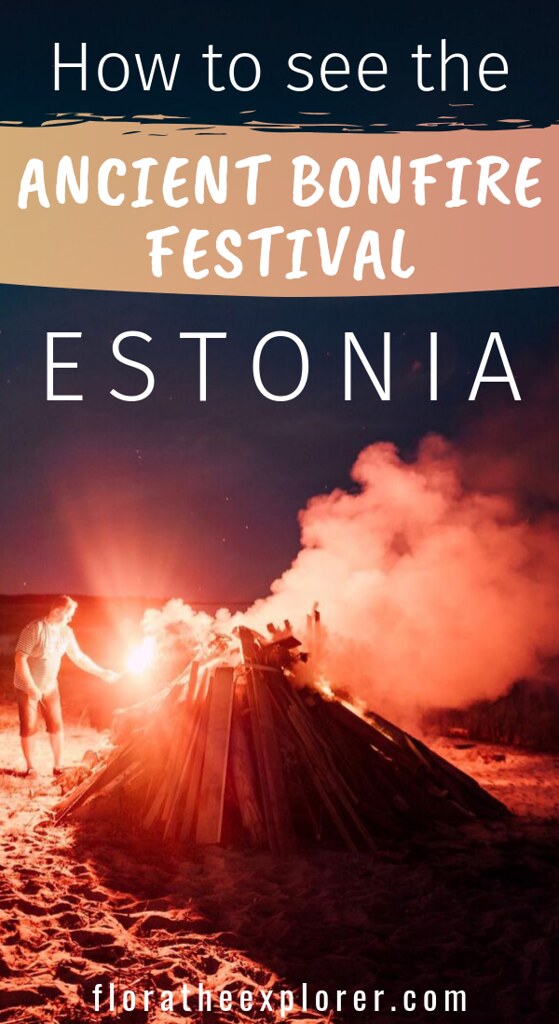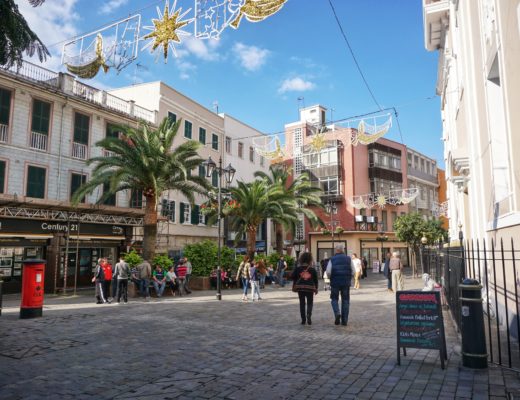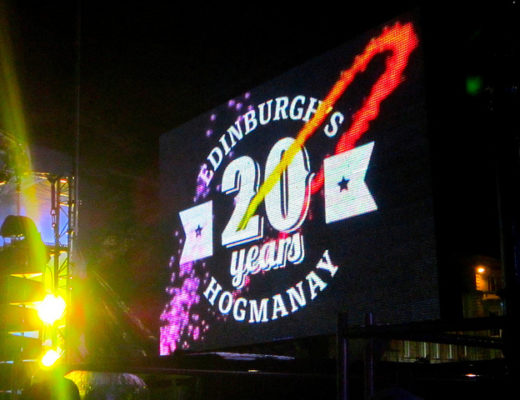On Kihnu island, the Night of Ancient Bonfires is just beginning.
We stand on the sand, watching a modest group of Estonian musicians in traditional dress as they play a jaunty tune on accordions and guitars. Above us is a beautiful hazy summer dusk sky – although the soft pastel colours aren’t distraction enough from the mosquitos which buzz through the air and nip at our skin.
I look across the stacked-up pile of wood in the centre of this little gathering, past the scarf-covered heads bent in quiet conversation. The ocean water is strangely calm: it’s so close to us, yet it doesn’t make a sound.
Where exactly is Kihnu island, and why are we here?
It’s the end of summer and I’m spending the night on Kihnu island, a tiny stretch of land about an hour’s ferry ride from the Estonian mainland. Kihnu is home to a small, conservative population of about 400 Estonians – and it’s also famous for being one of the world’s last matriarchal societies.
Throughout the centuries, the Kihnu men have spent their lives at sea: catching fish, hunting seals and sailing ships filled with produce to trade and sell. Their absence left the Kihnu women responsible not just for caring for their homes and children, but also for running the farms, raising the animals, governing the island and maintaining its cultural traditions – everything from wedding ceremonies to knitted handicrafts to folk festivals.
One such festival is the Night of Ancient Lights.
Held on the last Saturday of August each year, people gather at Kihnu’s coastline to light a bonfire. From the soft sands, it’s just about possible to see tiny flickering dots on the horizon; the location of other fires burning on the Estonian mainland.
But the Night of Ancient Lights isn’t just a Kihnu festival – or even just in Estonia. It’s actually a recently resurrected folk tradition which is now celebrated by all the countries surrounding the Baltic Sea.
What is ‘The Night of Ancient Lights’ all about?
The Night of Ancient Lights (also known as the Night of Ancient Bonfires) harks back to the Viking era, when signalling fires were lit to communicate with those on neighbouring shores and to guide sailors home from sea. Although those constantly burning signal fires have long been replaced by lighthouses and radio communication, the sea still unites everyone – especially the coastal communities of the Baltics.
In 1992, two friends in Finland decided to resurrect the old fire-lighting tradition to celebrate the end of summer (it was also Finland’s 75th anniversary of independence) and neighbouring countries followed suit: Estonia first lit their fires in 2009 and have done so every year since.
Read more: the 800 year old village festival of Cesis, Latvia
Nowadays this annual festival helps to promote unity among the Baltic nations and farther afield: the global map shows fires being lit throughout Estonia, Latvia, Lithuania, across to Finland and Sweden, and even as far as the USA. It’s also a chance to create awareness about the sea’s importance for these countries and the fragility of the coastline’s ecology.
At its heart though, these bonfires create the perfect setting for people to gather together and say goodbye to summer for another year, creating a new tradition for themselves while also preserving the ancient cultural traditions of their ancestors.
Time to experience a traditional Estonian festival!
At 8.30pm on the last Saturday in August, Kim and I cycled our rental bikes through forests filled with impossibly tall pine trees.
We were late.
A variety of plates filled with fried deliciousness – black bread with garlic cheese sauce, hot baked dumplings and fresh fish – had delayed our arrival at the bonfires. Now we had to pedal so fast that when I heard the wind whistling past my ears, I thought it was mosquitos.
When we reached the Kihnu shore line, significantly out of breath, that whistling became a reality. Dozens of hungry mosquitos zipped around our heads as we parked our bikes beside the harbour’s lone street light and walked towards the small crowd gathered by the water’s edge.
I could hear the faint strains of music. Estonia’s bonfire night had already begun.
We’d spent the day learning about Kihnu’s female-led society, and now their traditional customs were a visible reality. Everywhere I looked, Kihnu women of every age wore their colourful striped skirts, from the middle-aged to teenagers, young girls and even a tiny baby (who even sported a handmade traditional bonnet too).
As the musicians ceased playing we found a place to sit, on a log bench just beside the still-unlit bonfire. The sound of bagpipes announced a troupe of performers, who made their way through the crowd to stand beside the long grass.
Read more: traditions & superstitions at the witches market in Bolivia
This group of four young Estonians, dressed all in black and draped with furs, were jarringly different to the traditional Kihnu outfits around them. It made sense, then, that I’d imagined a performance which spoke to the strange atmosphere settling on this traditional gathering – but I was completely wrong.
Instead, the troupe launched into something akin to pantomime – but as it was all in Estonian, we didn’t understand a word. Thanks to the hand gestures, sound effects, musical accompaniment and a lot of laughter from the crowd, we got the impression that they were telling stories about pirates, kings, babies and gruesome murders. Possibly. It was hard to tell.
Nonetheless, they put on a fascinatingly bizarre performance which continued for almost an hour. Meanwhile the light grew darker around us and the drum commenced a slow beat, barely noticeable at first but growing steadily louder. I watched the sky fade from pink to purple to deep blueish red – and then it was night.
Lighting bonfires on the beach
Two men came forward with flares already burning, thrusting them straight into the base of the wood pile. The bright red light strengthened and billowing clouds of smoke erupted from the bonfire as a hush descended around us.
As a group of men in striped shirts began to sing a low, haunting melody, I looked at the faces of the Estonian children around me. Their wide eyes reflected the flames and sparks which danced upwards into the night sky. In the stillness, the crackling wood sounded almost like applause.
Eventually the heat of the fire grew so hot that we had to back off. We made our way to the open doors of a little hall with people sitting outside together, chatting, laughing and drinking beers. Inside the hall we spotted a young guy with dreadlocks who’d been sitting close to us and speaking English to his friends, so we asked him to explain what the performance had been about.
“Ah!” he said brightly, “It’s all about the history of the island – the sailors, the stories. And look –” he pointed across the water to a tiny pinprick of light on the barely visible horizon line. “You can see the fires on the mainland too.”
Connected by the sea: where fire meets water
I’m becoming increasingly fascinated by cultural traditions: the ancient rituals which communities have continued to uphold over generations, and the beliefs which are in danger of becoming lost. Marking the annual cycles each year is perhaps the oldest tradition of all. It’s something which cultures across the world have continued to do since history began.
Estonia has plenty of bonfire-based folk celebrations — in particularly Jaaniõhtu (Midsummer’s Eve) on 23rd June, and Jaanipäev (St John’s Day or Midsummer’s Day) on 24th June. On the longest day of the year, fishing boats are set alight and Estonian people spend all night leaping over fires to celebrate the summer solstice.
Yet the Night of Ancient Bonfires marks the end of the summer, allowing people to welcome in the darker half of the year. Perhaps it’s less celebrative and more thoughtful: a chance to reflect on the connections which help us through the winter months.
I imagine what this chain of fires look like from the sky. Knowing that thousands of bonfires have been lit tonight – knowing there are thousands of people encircling them, watching the flames – it’s a beautifully strange thought. Even if I can’t see them, I can still feel this sense of connection stretching far across the coastline.
We left the Kihnu locals dancing together beneath a ceiling filled with blue and purple fairy lights. Outside the hall and beyond the bonfire, the air felt suddenly crisp and cold: the start of autumn.
Under clean skies and an unending expanse of stars, we boarded our bikes again and headed off into the night.
Read what happened next on our Kihnu island adventure…
Pin this article if you enjoyed it!
Disclaimer: my trip to Kihnu Estonia was in partnership with Visit Estonia,but being late to the bonfires was all our own doing.














1 Comment
Samhuinn Fire Festival: Celebrating Edinburgh’s Ancient Halloween Tradition
November 27, 2019 at 4:27 pm[…] Read more: Ending the summer at Estonia’s seasonal bonfire festival […]